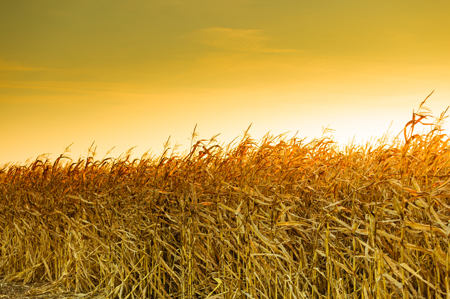Corn Decisions Aplenty as June Looms Large
Category: Grains
 (Ohio’s Country Journal) – As the calendar days pass by and too-wet soil conditions persist, some tough corn decisions are being forced upon farmers.
(Ohio’s Country Journal) – As the calendar days pass by and too-wet soil conditions persist, some tough corn decisions are being forced upon farmers.
Across the state, numerous growers have reported having poor stands, said Peter Thomison, Ohio State University Extension corn specialist. Thomison has heard reports of abnormal growth in their young corn plants, including plants that have developed leaves underground. The deluge of rain in late April and much of May throughout Ohio offered limited planting opportunities. Pounding rains led to crusted soils in fields that did get planted, making it difficult for emerging corn plants to penetrate the surface of the soil and causing leaves to form underneath the ground, Thomison said.
In Darke County where persistent rains fell through most of the planting season, many farmers are awaiting word from their crop insurance adjusters before they replant, said Sam Custer, an OSU Extension educator.
“There’s some corn out there that still has a chance,” Custer said. “The farmers will just have to determine if it’s feasible to replant.”
Key considerations in making replant decisions should be determining the damaged fields’ current yield potential, its replant yield potential, and the income the crop will generate if it’s replanted, Thomison said.
“Don’t make a final assessment on the extent of damage and stand loss too quickly,” Thomison said.
The decision to replant has changed in the last couple of weeks for many farmers. Multiple rains softened the crusted soils to allow better emergence in many parts of the state than initially anticipated and, as the calendar date progresses, there is less advantage to replanting, said Bill McDonald, director of agronomic services for Seed Consultants, Inc..
“Of course we have had a lot of rain and we had a lot of planting issues and replant concerns. We have been evaluating a lot of stands. A lot of corn we considered tearing up on May 15 we are re-assessing,” McDonald said. “Right now we are looking at stands that are 22,000-plus plants per acre with a lot more potential than tearing up and replanting the field. We are looking at a reduced yield now if we tear it up and start over.”
And as June draws near, many farmers with soggy fields are wondering how much longer corn should be planted.
“I look at June 10 or June 12 as a time when I would seriously consider switching to beans. It also depends what has been done in the field,” McDonald said. “There is a lot of anhydrous out there. I might consider going past that date with a shorter season corn if I was committed to corn on those acres.”
Then, as the corn crop is emerging, it may be important to assess nitrogen after all of the rainfall.
“It is tough to assess exactly what nitrogen we have lost without taking a nitrogen test. I am very comfortable that if you used anhydrous with N-serve that a lot of that N is still there. If you used urea or 28% UAN solution that had not been stabilized, you don’t know what’s there. We probably lost it. That is a lot of what we have to consider and take a test out there to see what we do have,” McDonald said. “Take commonsense measures. When we are applying N we should never do so without a soil test to see what we need to be doing. I am a strong proponent of grid sampling. We need to know what is there and put on the correct amounts to protect our environment. This is one step to doing that. Put on what is needed and nothing more.”




